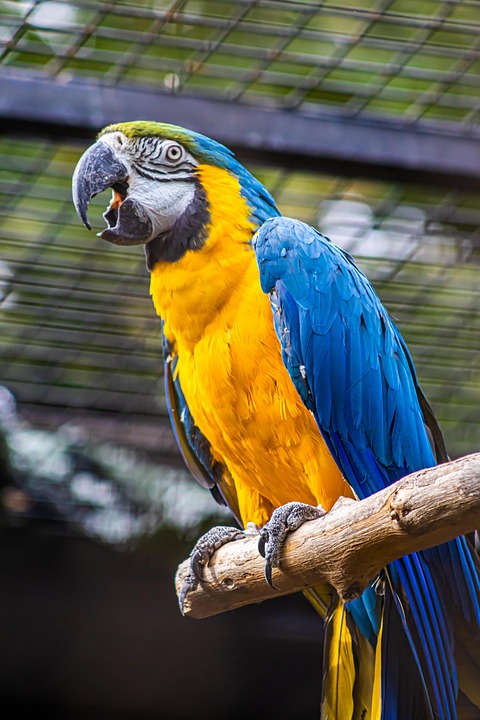
“`html
Introduction
Keeping small pets such as hamsters, guinea pigs, rabbits, and birds healthy and happy requires attention to various aspects of their care, among which cage cleanliness is paramount. A clean cage not only ensures the well-being of your pet but also minimizes odors and the risk of disease. In this comprehensive guide, we present the ultimate cage cleaning checklist to help you maintain a hygienic and comfortable environment for your small pet.
Understanding the Importance of a Clean Cage
A clean cage is crucial for several reasons:
1. **Health:** A dirty cage can harbor bacteria, fungi, and parasites that may lead to infections or illnesses in pets. Regular cleaning reduces these risks.
2. **Odor Control:** Accumulation of waste and uneaten food can produce unpleasant odors. Cleaning helps keep your home smelling fresh.
3. **Behavior:** A clean environment can positively influence your pet’s behavior, reducing stress and promoting activity and play.
4. **Observation:** Regular cleaning allows you to inspect the cage and your pet closely, giving you the opportunity to notice any signs of health issues early.
Essential Supplies for Cage Cleaning
Before you begin, gather the necessary supplies to ensure an efficient and thorough cleaning process:
– **Gloves:** Protect your hands from waste and cleaning agents.
– **Face Mask:** To prevent inhaling dust and allergens.
– **Scrub Brushes and Sponges:** For scrubbing and wiping surfaces.
– **Non-toxic Cleaners:** Vinegar and water solutions or pet-safe disinfectants.
– **Paper Towels or Cloths:** For drying surfaces.
– **Trash Bags:** For disposing of waste and old bedding.
– **Replacement Bedding and Substrate:** Fresh materials to replenish the cage.
– **Optional:** A small vacuum for removing loose debris.
Daily Maintenance: Keeping Up with Routine Cleanliness
Daily maintenance is crucial in preventing buildup and ensuring a clean environment. Here are the tasks to include in your daily routine:
Spot Clean
– Remove any visible waste, such as droppings or soiled bedding, to prevent accumulation and odors.
Food and Water Change
– Replace uneaten food and refresh water supplies to ensure your pet has access to clean sustenance.
Check for Hazards
– Inspect the cage for any sharp edges, broken toys, or other potential hazards that could harm your pet.
Weekly Cleaning: A More Thorough Approach
A weekly deep clean is essential to maintain overall hygiene. Follow these steps for a comprehensive cleaning:
Step 1: Remove Your Pet
– Place your pet in a secure, temporary habitat to keep them safe while you clean.
Step 2: Empty the Cage
– Take out all toys, dishes, and accessories. Dispose of old bedding and substrate.
Step 3: Wash Accessories
– Clean food dishes, water bottles, and toys using warm soapy water or a vinegar solution. Rinse thoroughly and let them dry.
Step 4: Clean the Cage
– Scrub the cage’s surfaces, including bars, floor, and any platforms, using a non-toxic cleaner. Pay particular attention to corners and crevices where waste can accumulate.
Step 5: Rinse and Dry
– Rinse the cage and accessories with clean water to remove any cleaning residue. Dry thoroughly with paper towels or cloths to prevent rust and bacterial growth.
Step 6: Reassemble and Replace
– Once everything is dry, reassemble the cage with fresh bedding, clean toys, and accessories. Ensure everything is securely in place.
Step 7: Return Your Pet
– Safely place your pet back into the cleaned cage, ensuring they are comfortable and have access to food and water.
Monthly Deep Clean: Going the Extra Mile
A monthly deep clean provides an opportunity for a more thorough examination and cleaning of your pet’s living space:
Step 1: Detailed Inspection
– Inspect the entire cage for wear and tear or potential hazards, and repair or replace as needed.
Step 2: Disinfect
– After the usual cleaning routine, use a pet-safe disinfectant on all surfaces to eliminate lingering germs.
Step 3: Bedding Overhaul
– Replace all bedding and substrate, even in areas that may seem clean, to ensure freshness.
Step 4: Environment Enhancement
– Consider adding new toys or rearranging the cage layout to enrich your pet’s environment.
Tips for Efficient and Safe Cleaning
– **Use Pet-safe Products:** Always use cleaning agents that are non-toxic and safe for pets.
– **Ventilation:** After cleaning, make sure the cage is well-ventilated to dry completely and remove any fumes.
– **Regular Checks:** While cleaning, check for signs of chewing or damage to cage materials that could pose a risk.
– **Time Management:** Plan your cleaning schedule to minimize stress for both you and your pet. Cleaning during your pet’s active hours may reduce disruption.
Conclusion
Maintaining a clean cage is vital for your small pet’s health and happiness. By following this ultimate cage cleaning checklist, you can create a safe, hygienic, and stimulating environment for your furry or feathered friend. Regular cleaning not only enhances your pet’s quality of life but also strengthens the bond between you, as it involves paying close attention to their needs and well-being. Keep this guide handy and make cage cleaning an integral part of your pet care routine.
“`
#ChatGPT assisted in the creation of this article.








